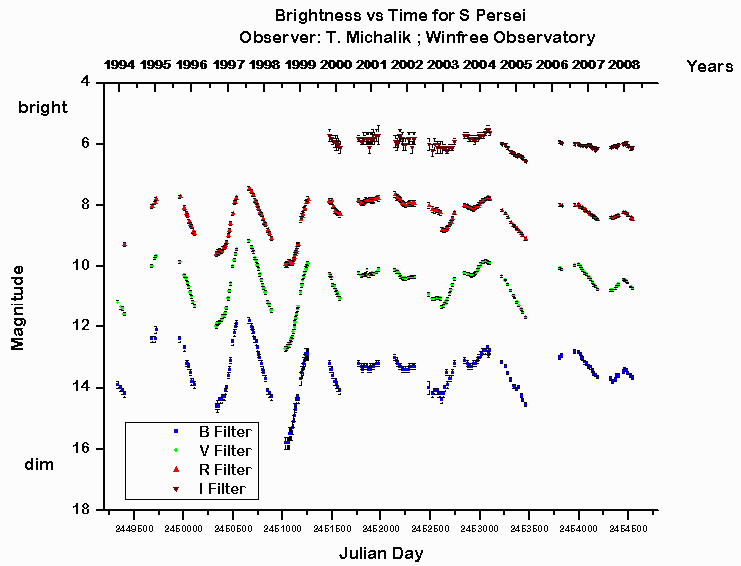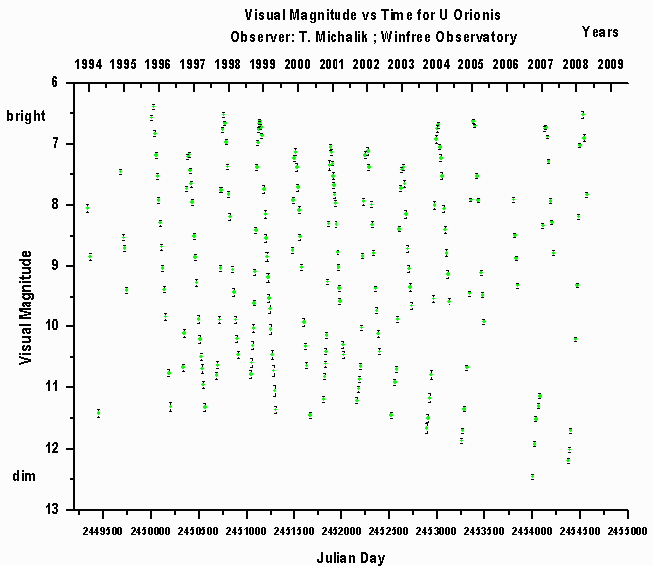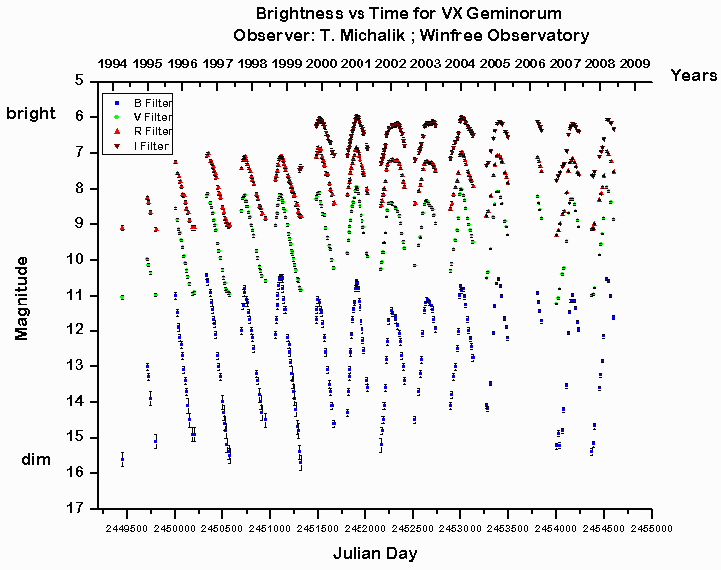![]() PULSATING
VARIABLE STARS MONITORED AT WINFREE OBSERVATORY
PULSATING
VARIABLE STARS MONITORED AT WINFREE OBSERVATORY![]()
Some stars vary in brightness because they pulsate in and out. In the outer layers of pulsating stars, the inward pull of gravity and the outward push of pressure are out of balance. When outward pressure overwhelms inward gravity, the star expands. When inward gravity surpasses outward pressure, the star contracts. These pulsations can be regular or irregular, and the pulsation periods range from more than a year to only a few hours.

To see a brief animation of pulsating stars, click here.
(Animation from the Space Telescope Science Institute.)
Here are a few examples of pulsating variable stars monitored at Winfree Observatory.
S PERSEI
For the past several years I have participated in the American Association of Variable Star Observers' (AAVSO's) program to monitor the brightness of a selected group of eight long period Mira variable stars using a CCD camera. These long period stars require measurements by observers all over the world for long periods of time. Only by combining measurements made by many observers, each of which has clear skies on different nights, can the AAVSO put together light curves for these stars.
The number of variable star measurements sent to the AAVSO from Winfree Observatory since December, 1993 now stands at: 4382.
One star in the program is called S Persei. (A variable designated S in the constellation Perseus.) It has a slow pulsation period of 822 days. I've observed this star since December of 1993, and recorded its brightness through three or four different color filters. (Comparing brightnesses measured through different color filters yields information about the temperature of the star.) The light curve of S Persei is displayed below.

U ORIONIS
U Orionis is a Mira variable star discovered in 1885 by J. Gore. It is about 900 light years away in the constellation Orion. At maximum brightness it puts out about 250 times more power than our Sun! This star has a pulsation period of 368 days. The light curve of U Orionis measured through the "visual" (V) filter is shown below.
Along with brightness variation, this light curve also records my increasing efficiency at obtaining measurements. As the years go by, I manage to record more and more measurements (and get less and less sleep!)

VX GEMINORUM
VX Geminorum is another Mira variable star I've been able to monitor regularly. I get lots of measurements of this star because it is above the horizon during the winter months when skies are relatively clear here in Virginia. The pulsation period of VX Geminorum is 379 days.
The light curve of VX Geminorum through different color filters is displayed below.


AY AURIGAE
AY Aurigae is a Mira variable with a period of 389.8 days. It exhibits a curious "hesitation" along the way when brightening from minimum to maximum.